Could Milwaukee Support a Pro Soccer Team?
How I came to embrace soccer and what it could mean for America and Milwaukee.
The closest thing I had to religion growing up was the Green Bay Packers. Sundays (and the occasional Monday night) were sacred. We studied the plays like scripture and discussed the sermon of our high priest, the head coach. I wrote poems about the Packers. During my childhood our savior was quarterback Brett Favre, the three-time MVP and Super Bowl champion.
I have yet to experience a more joyous and blessed day than January 26, 1997. When the confetti flew in New Orleans my friends and I ran outside to sing, dance and scream in the snowy streets of Milwaukee. Two days later my family was at Lambeau Field, bundled up in our winter gear for a glimpse of the Lombardi Trophy.
Needless to say, I wanted to be a quarterback. When I was eleven my parents signed me up for full-contact flag football. Wyrick Park, where we practiced, is where I like to think I became a man, or at least an emotionally damaged teenager tapping into an adult-like rage built on resentment and self-hatred.
Our coach was a retired Navy Seal, a tank of a man. He had the thickest thighs and the most massive chest I’d ever seen. To work our abdomen muscles he would lay us down in a row and run across our stomachs in his military boots. We were between eleven and fourteen.
The worst (or best, depending on your perspective) drill that we did involved forming a circle. One boy went in the middle and kept his head on a swivel. The rest of us sprinted in place. Our coach called out a number, which corresponded to a jersey, and that boy hit the kid in the middle as hard as he could.
I wasn’t a particularly strong kid. I was tall, skinny and somewhat slow. I hated my coach for working us so hard. I hated myself for being so weak and lead-footed. I burst into tears after a few practices. I didn’t play much. But I stuck with it. I was determined to be a quarterback.
Peewee football paralleled those rebellious middle school years when I was constantly fighting with my parents. Football provided a pressure valve. Before each game our coach gave the same basic pep talk.
“Whatever has been bothering you this week, whether it’s your teachers, your parents or your siblings, now is the time to take out your anger. Channel that energy and leave it all on the field.”
I felt privileged to have an outlet for my adolescent angst. But who were we taking it out on? The opposing team. Another gang of vulnerable, pubescent, confused, furious boys of varying shapes and sizes. There were a lot of sitting ducks and a lot of “unnecessary roughness.”
Full-contact flag is a far cry from flag football without pads and helmets. We were allowed to tackle opposing players as long as we came up with their flags. It was easy to fish for the flags after violently taking a kid down. Helmet-to-helmet hits were frowned upon, but they happened. Some of the worst collisions took place away from the ball and were never penalized, often cheered on by parents and friends in the stands.
By the last year of peewee I became the quarterback of my team, a position I maintained when I got to high school.
On September 10, 2001 I was playing quarterback for my high school’s junior varsity team. The center was a kid I’d never practiced with. It wasn’t long before we fumbled a snap. Instead of falling on the ball, like I was taught to do, I bent down to pick it up. The next thing I knew a very large defensive lineman was on top of me, folding my body in half. Everything changed that day…for my lower back.
I didn’t need a stretcher and an ambulance. I was carried onto the back seat of my parents car and taken to a walk-in clinic. I had some pinched discs and hyper-extended muscles. I needed rest and physical therapy.
When the first plane flew into the World Trade Center the next day I was stretched out on the couch, dozing off. My mom teaches at an elementary school where they weren’t allowed to turn on their TVs, so she frantically called me all morning for updates. Sometime around noon I grew tired of the non-stop news coverage. I tuned into Sweet November, a cheeseball romance starring Keanu Reeves and Charlize Theron that was on Pay-Per-View. I watched it twice on 9/11. We can’t let the terrorists win, right?
My football season was over. On the second day of summer practice the next year I took a brutal hit that bruised my ribcage, even though I was wearing an extra flak jacket. At this point I was trying to shed my reputation as a jock. I was reading Noam Chomsky and auditioning for school plays, so I walked away from football.
In university I became more politically progressive and as a result, I began to resent football. I could barely bring myself to even watch the Packers. At the time I believed football represented so much of what was wrong with American society. I saw the linemen as the underpaid working-class, the skill players as the overpaid celebrities, the coaches as the overworked managers, and the owners as the greedy CEOs making insane profit off the worker’s labor. Not to mention, the start-and-stop nature of the game is perfectly suited for maximum commercial time.
I saw football as nothing more than another avenue for corporate America to sell us shit we didn’t need, like the War in Iraq.
It took a stint living in Europe and a bout of homesickness to bring me back to American football. Staying up late on Sunday nights watching the Packers made me feel closer to my family and friends. At the same time I was immersed in the original game of football, which we know as soccer.
The fact that I never got into soccer is a testament to the popularity of football in Wisconsin, because soccer is in my genes. My mom’s entire social world revolved around Milwaukee’s German soccer clubs. She was a player and a groupie. Her first kiss was on a bus heading to a boys tournament in Texas. She was an original member of the Women’s Soccer club, she continues to play and has been coaching high school for fifteen years. I have a couple fond memories of watching the 2002 World Cup with high school friends, but I never really played.
After university I got a six-month work visa for the United Kingdom and settled in Edinburgh, Scotland. My first job was in the ticket office at Easter Road, home of the Hibernian Football Club. Later I worked as a bartender in the suites. When my mom and brother came to visit we sat in the season ticket holder section at Easter Road, where the onslaught of cursing Scottish brogues may have been more entertaining than the action on the pitch. Later we shuffled through the streets of London with the West Ham United faithful to Boleyn Ground, which roared as loud (or louder) as any American stadium.
On Saturday nights I got into the habit of watching “Match of the Day,” an English Premier League review show whose minimal aesthetic and full-highlights offered a welcome break from the cluttered, loud, ADD-oriented “SportsCenter.”
My time in Europe led to a romance in Canada. I got a journalism degree in Montreal but struggled to find work. I never learned enough French to be employable. For almost two years I would work in the States for a few months at a time then return to Montreal to be with my girlfriend. When I was gearing up to move back in early 2012 I searched for potential feature stories. I needed something where language wouldn’t be a barrier. Sports, of course.
Shortly after moving to Montreal in the summer of 2010 my girlfriend took me to Olympic Stadium for a friendly match between the minor league Montreal Impact and Italian heavyweights AC Milan, featuring Brazilian legend Ronaldhino. To the dismay of the 47,000 (mostly) Italian-Canadians on hand, the Impact managed to score a goal. I was impressed. A month before the match it was announced that the Impact would be joining Major League Soccer (MLS) for the 2012 season. Voilà, a story.
MLS is by far the youngest and least visible of the “Big Five” North American professional sports organizations. It’s been an uphill battle for the league since starting play in 1996. There are already countless established and beloved soccer leagues around the world. A number of North American soccer leagues rose and fell throughout the 20th Century, but none have stuck like MLS.
I sat down with the Montreal Impact’s 2012 head coach Jesse Marsch, an MLS icon and Racine native. “I’m not kidding when I say there were days when I would think, ‘Are we gonna get a paycheck this week?’ By year six or seven it looked like the league might fold.” Marsch recounted.
The league has struggled to take hold in a handful of markets, but Montreal is ripe for the game. The capital of French-Canadian culture might be the birthplace of ice hockey and the 115-year-old Canadiens team might be as omnipresent as the Packers in Wisconsin, but for the first time enrollment in youth soccer has surpassed youth hockey in Montreal, likely due to the steady influx of immigrants from around the world.
“The awareness of our team is bigger here than anywhere else I’ve been,” said Marsch. “When I walk around town people know who I am. That didn’t really happen in Chicago and LA. If I go to Little Italy it’s like, forget it, everybody wants me to sit down and feed me.”
This level of fandom is found in a few other places, mainly the expansion cities, which include Seattle, Philadelphia, Vancouver and the pinnacle of North American soccer, Portland. I spent ninety plus minutes among the ranks of the Timbers Army at Jeld-Wen Field in May 2013 and it was honestly the closest thing to being at Lambeau Field. The passion in the Pacific Northwest is truly world-class, and their supporter culture is starting to rub off on MLS cities across the continent.
There is one original club challenging Portland for Soccer Capital of America, Sporting Kansas City, the reigning MLS Cup Champions and host of the 2013 All-Star Game, which I went to with my mom and a couple of friends. The lively turnout for the three-day festivities was evidence that soccer has a stronghold in the Midwest.
MLS may be the face of North American soccer, but the soul is the century-old US Open Cup. Any amateur, semipro and professional team can enter the tournament. The Cup’s history is the story of American soccer; a blue-collar immigrant game. The tournament’s most successful clubs are Bethlehem Steel (1907-1930), a team of Pennsylvania steelworkers, and Maccabi Los Angeles (1971-1982), founded by a group of Israeli expatriates. MLS clubs have held the title over the last few decades but it hasn’t deterred gangs of weekend warriors.
My high school was unique in that our college prep courses were of the International Baccalaureate variety, rather than the more common Advanced Placement. The latter uses multiple choice tests to assess what students don’t know, while the former uses essay prompts to assess what students do know. For me, this is the main difference between football/basketball and soccer/hockey. In football/basketball you are expected to score each time you have the ball. As a result, the dominant attitude in America is the more scoring the better. In Europe and Canada I developed an appreciation for what I like to call “build up” (or “goalie”) sports, where the anticipation of a goal can lead to more euphoria than a buzzer-beating jump shot or a last second hail mary touchdown.
Improvisation is valued in all sports, but none more than soccer. Played at the highest level, it is a game of intelligence and elegance. This is why it is referred to as the “Beautiful Game.” By this token, football should be considered the “Ugly Game,” because it thrives on violence and brutality. Football resembles the frontal assault style of Civil War combat. Revelations about bounties being paid for injuring opposing players in the NFL, plus the long-term health effects of not just big hits, but cumulative small hits, has further sullied the NFL’s image.
Much was made last football season of the “concussion crisis” and the unprecedented $765 million settlement in a class-action lawsuit by a group of former players against the NFL. Many ex-coaches, ex-players and pundits rushed to defend the game. Others called for stricter rules forbidding paralyzing hits. The reality is that brutal hits are part of the fabric of football. Slow-motion films of bone-crushing hits have long been used to sell the sport.
I don’t think football will ever change. The near billion-dollar settlement might seem massive, but it’s nothing compared to the $10 billion a year in revenue generated by the NFL. Like the banks, the NFL is “too big to fail.” There is simply too much money at stake. In America, capitalism always comes first.
In light of the settlement some journalists have put the moral and ethical onus on the fans. The fact that football players’ bodies are sacrificed for our entertainment is not news. The man who legitimized professional football in the 1920s, Red Grange, was burnt out by age 26. There was a “concussion crisis” in the 1990s.
Americans excel at willful ignorance and collective short-term memory. It doesn’t matter how much attention a story gets in the media or how much evidence there is to back it up. The danger of playing football is like climate change; we know it exists but we don’t really want to do anything about it.
Imagine this: legendary linebacker Junior Seau shoots himself in the chest during the Super Bowl halftime show instead of in his own home. Would it alter our attitude about the game? I doubt it. Football is our most prized national distraction. I spoke with an assistant high school coach here in Milwaukee who admitted that his staff tells their players, “Parents care about concussions now, so if you take a big hit, do whatever you can to pass the concussion test and get back in the game.”
I’ve cared for elderly family members with degenerative brain diseases. I can’t imagine being responsible for my middle-aged father in the same condition, as the children and wives of so many former football players do. Many will say, “Well, they know the score and look how much they’re paid.” First off, you can’t put a price on a functioning brain. Secondly, many players didn’t know the risk, which is exactly what the NFL avoided admitting by securing a settlement in the lawsuit. By not going to trial the public will never know about documents that might have proven the NFL knowingly withheld information about the dangers of playing football.
Don’t get me wrong, soccer isn’t innocent. Countless match fixing scandals at all levels of play have plagued the game forever. FIFA (soccer’s governing body) is a grotesquely corrupt bunch. Concussions occur in soccer as well and studies have shown that a predilection for headers can result in an increased risk for CTE. But the difference is that in football violence and brutality is actively encouraged, even at the peewee level.
If we want our kids to play a safer game, don’t bother lobbying for an altered version of football, but consider the original version. For so long the consensus has been that soccer isn’t popular in America, not because kids and adults don’t play it, but because professional leagues aren’t profitable. The success of professional leagues depend heavily on TV contracts and soccer’s limited commercial time doesn’t suit advertisers and networks. It’s no surprise that the rise of American soccer and MLS has paralleled the emergence of social and online media.
Back in November I watched a 2013 MLS playoff match between the Seattle Sounders and Portland Timbers at a rowdy supporters bar in Northeast Portland. It was being played at CenturyLink Field in Seattle, home of both the Sounders and the Super Bowl Champion Seahawks, who had a regular season game scheduled the following afternoon. The field was painted for football and people were complaining that the yard lines were distracting and disrespectful. I reminded them that for much of the 20th Century football was played on baseball diamonds.
If soccer becomes the next great American sport, how will Milwaukee fit into the picture? It’s hard to imagine owning an MLS franchise anytime soon, considering our struggle to keep the Bucks in town and the fact that we don’t have a soccer team already in the second or third tier leagues. Sure, the Wave dominated their indoor league, but that’s a different game and the league recently folded.
It’s not that Milwaukee doesn’t have a passion for the game; our immigrant populations have adored the sport for decades. It’s about economics. Supporting the Brewers and Bucks is all we can seem to muster at this point. In 2005 there was a window and a push for an MLS franchise, which was spearheaded by Peter Wilt, a Wisconsin resident of 30 years and former General Manager of the Chicago Fire, but the plan ultimately fell through.
Wilt, who is now president of Indy Eleven club of the North American Soccer League (NASL), was a speaker Tuesday night at a symposium held at City Hall to discuss the prospect of a professional outdoor soccer team in Milwaukee. The event brought together a panel of speakers from the local soccer scene, media and an alderman, Nik Kovac. It was the first in a series of events held in the Greater Milwaukee Area over the next six months intended to generate support for a professional team, which would most likely play in a lower division and at an already existing venue such as the Marquette Valley Fields.
The international friendly match between the most popular Mexican club, Chivas de Guadalajara, and Premier League squad Swansea City tonight at Miller Park will be a good test of Milwaukee’s appetite for the game. The turnout might be skewed by the fact that it will be just three days after the World Cup final in Brazil, but that’s just smart planning by Miller Park for their first international soccer match.
I doubt I’ll ever enjoy soccer on the same emotional level that I have football, simply because I don’t have childhood memories attached to the game. But I’ve been busy making adult memories and I continued that streak this past month watching with the rest of the world as the greatest players on the planet vied for the Cup. And just think, what if some day one of those players started their professional career right here in Milwaukee? I believe the time is right to start building for that future.


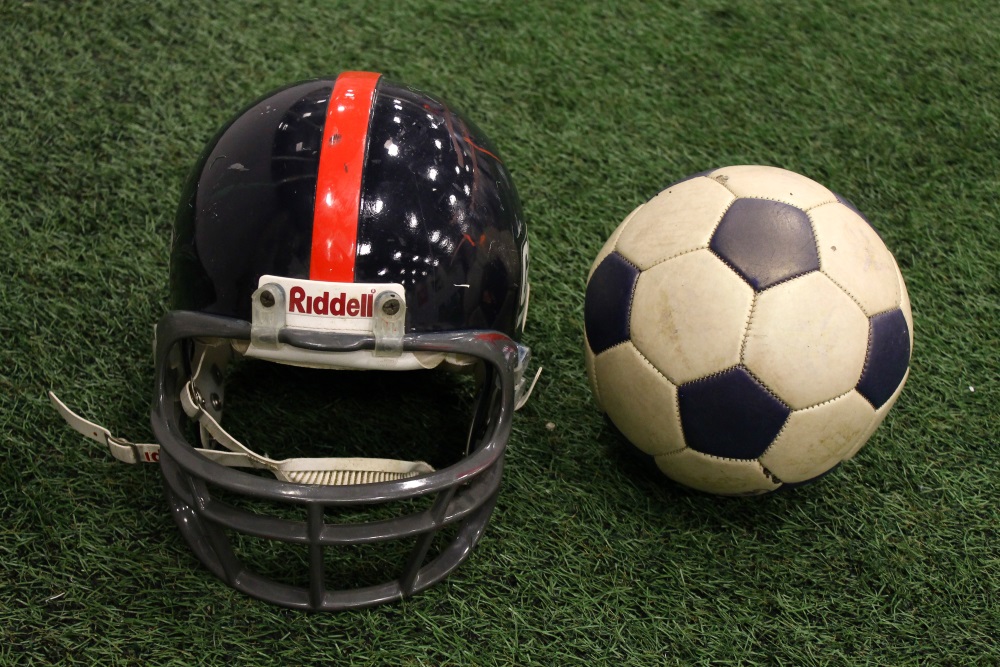
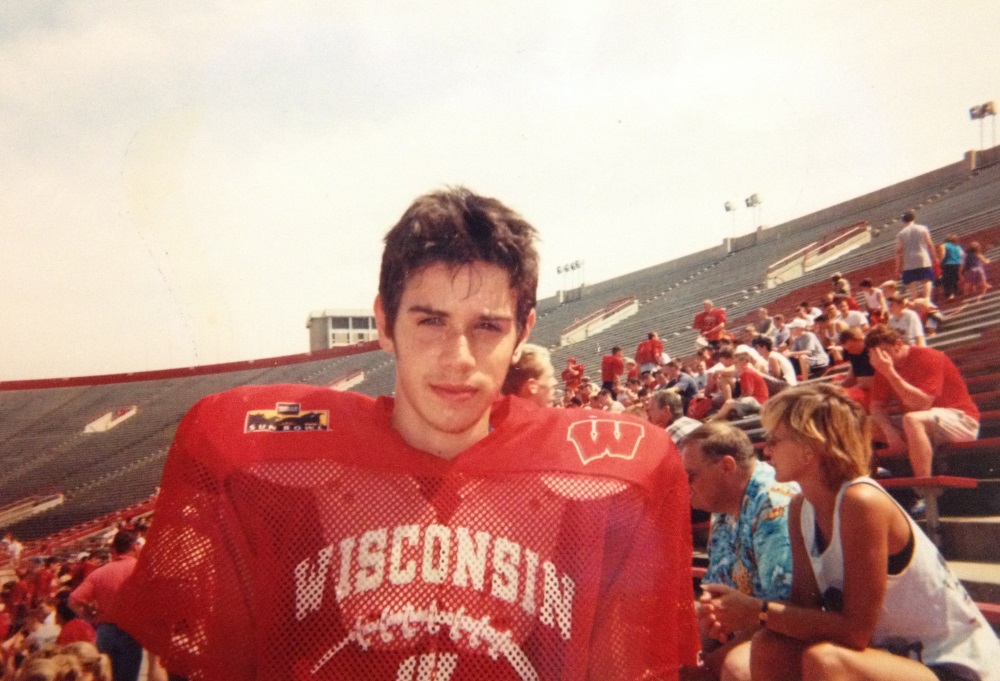
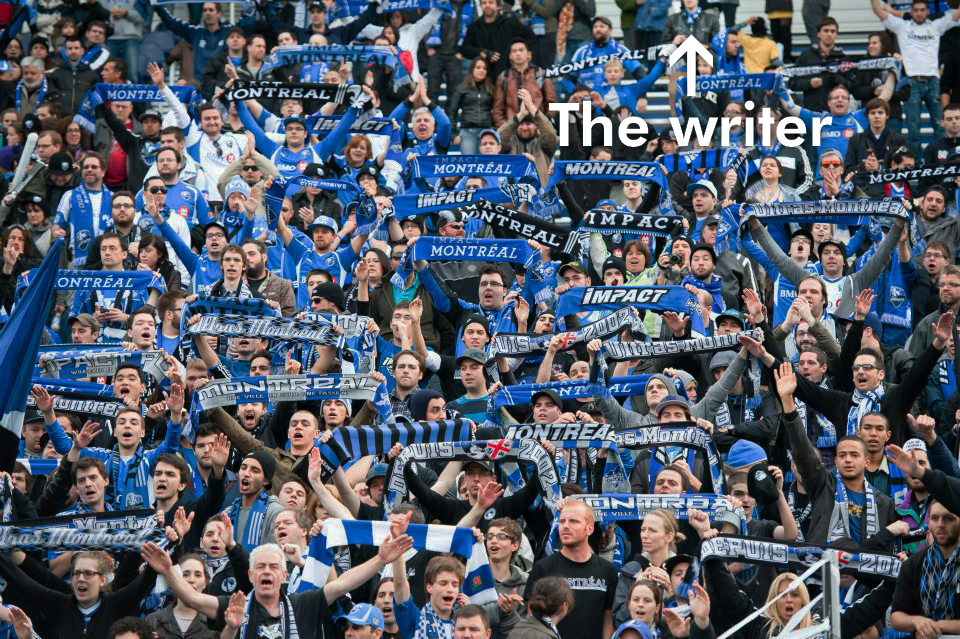
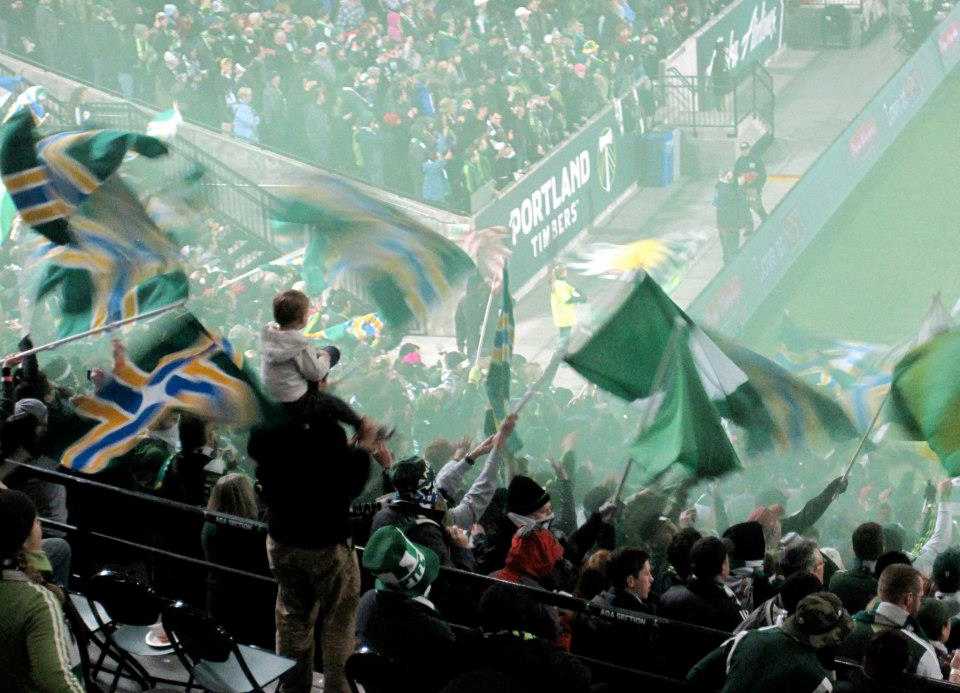
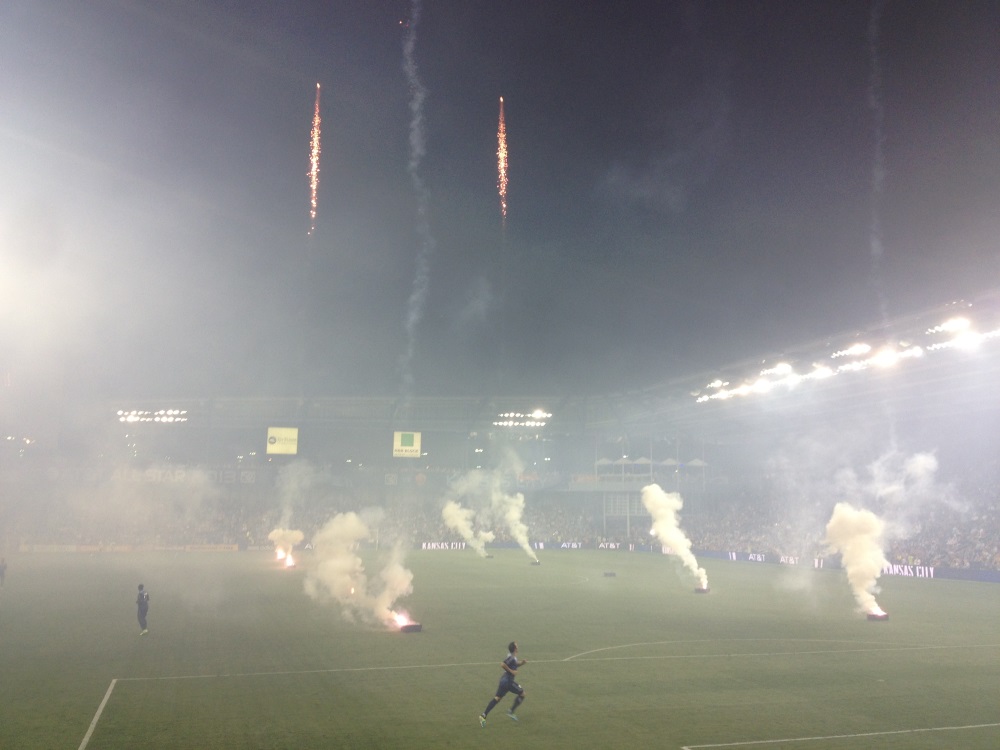
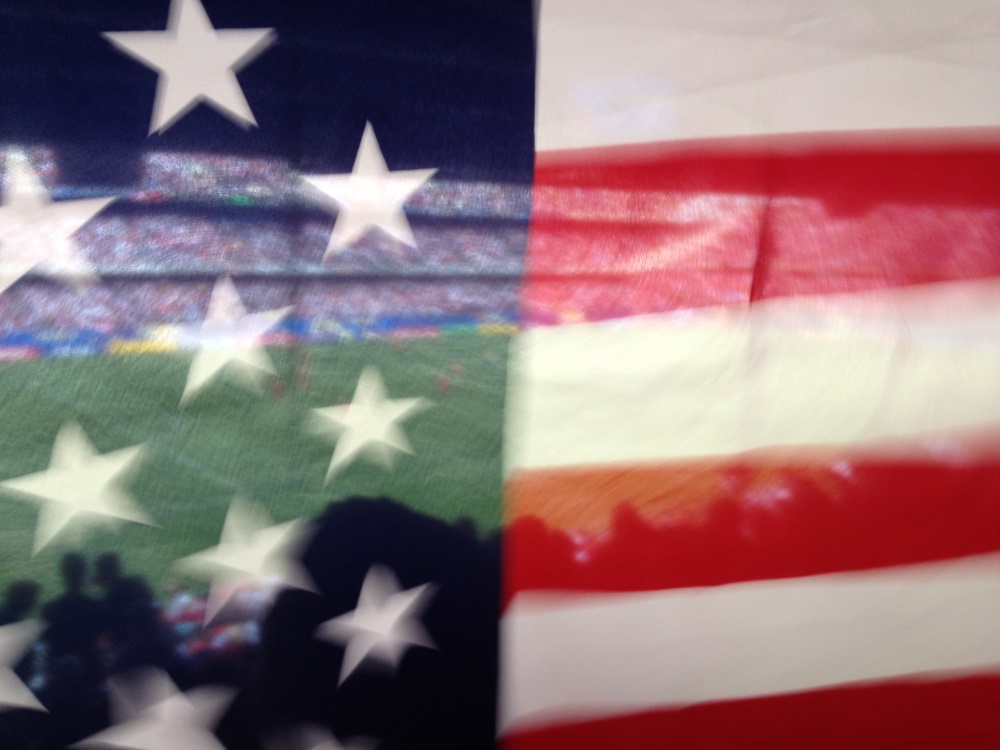
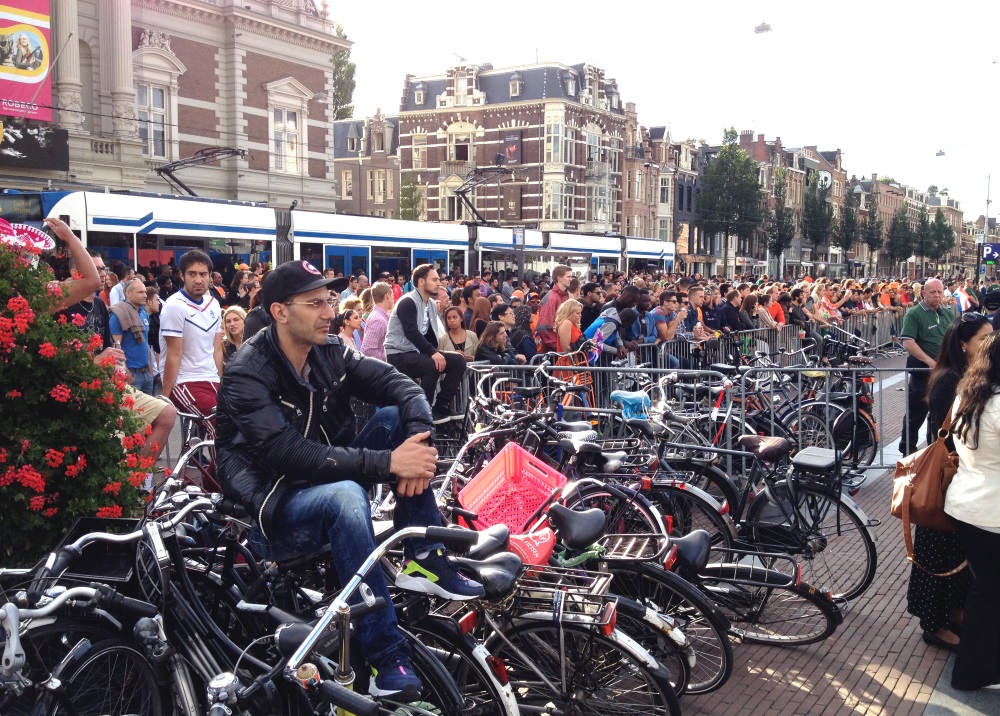





















A decently written article, but it should have been titled, “An Autobiography of Joey Grihalva as it relates to PeeWee Football and Writing about Soccer”. Now, could we get an article on “Could Milwaukee Support a Pro Soccer Team?”? It could cover who is behind the meetings, how to support the cause, upcoming meetings, maybe an Interview with Sue Black and someone from the MLS. I am extremely interested in the idea of Milwaukee trying for an MLS franchise, but this piece is a waste to anyone who doesn’t know the author.
@partypanther
My toughts exactly 🙂
Love the idea of an MLS team, but getting a stadium built would be a task! It would have to be privately built. Just look at how hard it is to get a new Bucks arena!
I think the appetite is there and we do have the immigrant population dying for this type of entertainment as well. Maybe a partnership between a developer and MU to vastly expand its stadium? Have them work together and maybe an agreement the developer gets first dibs at rights for all development south of Wisconsin Ave, east of 35th Street north of 94 and west of 43. It would provide a very unique opportunity to invest in the nearby neighborhood and give incentive for a devleoper(s) to make a massive investment in the neighborhood. It could even include those properties the state lawmaker wanted the new arena to go on. Push for some sort of entertainment or commercial investment next to the new stadium.
partypanther: I understand the complaint, it’s a misleading headline. It’s a personal piece about football/soccer that I’ve been trying to get published for a while now and UrbanMilwaukee was kind enough to do it. My suggested title was “Less is More: A Football Story,” but it needed to be more Milwaukee-centric. The subtitle does make it clear that it’s a first person narrative though. And I did talk to Jesse Marsch, who is from MLS and is quoted in the story. The whole who is behind the meetings, how to support the cause, etc. will unfold over the following months. Milwaukee Soccer Development Group organized the symposium last night, they are one of the interested parties that I would pay attention to for finding out about upcoming meetings/events: https://www.facebook.com/MILSoccerDG
Instead of a MLS team, what about college? UW Milwaukee will never be able to compete with MU or Madison in basketball or football – the legacy and capital required is just too big of a lift, but if they focused on soccer and directed the athletic dollars they are spending on basketball to a soccer program they could be legitimately contending for NCAA championships in short order (they were already advancing deep in the NCAA tournament in the early 2000s)
They play on campus now and, with some investment from alumni, could have a pretty amazing and intimate stadium. I even remember seeing some senior designs on display from students in the Architecture and Urban Planning Building at one point. If you built events around the game, like tailgates and concerts you should be able to attract a sizable chunk of students, 2,000 of whom live a block away from the stadium, to become die hards (My guess is that a sizable part of the World Cup crowd on Brady Street were already current or former UWM students).
And although college soccer isn’t huge now, the chance football could decline in the future, as stated in the article, is real. Soccer would be the natural replacement for college football as it is a fall sport and growing in popularity. And before you tell me that could never happen, remember boxing was once the most popular college sport in this country (and actually UW was one of the best in the country) until the ’50s when it was banned from the NCAA due to deaths of some athletes.
This could position Milwaukee to be the leader in the sport for the state as they would already have a legacy (just as MU has the legacy in Basketball). Think of soccer now being what basketball was in the 70s. It is a long-term vision with some risk but I think it is more feasible than trying to bring in a professional franchise.
Beer Baron, looks like we are on the same page – just different schools! I could see MU doing this, but I don’t think it would ever overtake basketball as the dominate sport at MU, plus would MU really want to invest right next to the ever expanding casino?
As an alumni of UW-Milwaukee I have an obvious bias here, but I really think UWM is better positioned as they don’t have a dominate sport right now and, until MU swiped our coach, had a great team and still a very respectable team without any real investment, this could be the perfect sport for UWM to concentrate on.
Ben Butz: I can appreciate your perspective and I do want to see UWM grow and improve both athletically and academically, but what we’re talking about and trying to build support for is a team that the whole city can get behind. I think having a strong soccer culture at UWM and MU will definitely improve our chances of sustaining a professional outdoor team in Milwaukee, but we’ve got to think bigger if want to create something that college grads, suburban moms, immigrants, and anyone in between can support and enjoy.
I’ll add to this conversation, and I’d like to think I have some knowledge: I was the PA announcer for UWM’s soccer programs between 2001-04 and have been the voice of Valley Fields, home to Marquette’s programs, since 2007.
Beer Baron & Ben, your thoughts are wise, but part of me also believes soccer goes as far as its fans want it to, and its fans have and are taking it as far as it can go for the time being. Soccer fans are obviously rabid and willing to put their money where their mouth is, but there are only so many of them. Peter Wilt, lover of the game & Milwaukee that he is, tried very hard to organize the MLS effort here a while ago and nothing much materialized of it. This is a statement of faith in Wilt: If he can’t accomplish it, I’m not sure who can, or who else would have both the resources and love for the game to champion the effort.
While there is certainly room to grow with both the UWM and Marquette programs, getting folks to make an over-the-top investment, like they did in Omaha for Creighton’s beautiful Morrison Stadium, has only gone so far. Marquette had plans to build a similar facility to Morrison’s on the table a few years ago, but the economy went downhill, they were essentially scrapped and a brand new, but scaled back, stand is now in place that I think they’d be hesitant to replace anytime soon. The facility is also kind of land-locked, given the city lot to the west and the state-protected Hank Aaron Trail to the north. An east stand could be possible, but probably not a southeast corner stand with the new locker rooms also constructed. For the time being, the Valley is a very nice college soccer facility, but it will probably never be much more.
UWM, similarly, was able to use its early 2000s success to lobby for changes like lights, a turf pitch and a new sound system (I shake my fist that they didn’t think of that when I was there), but those were expensive in and of themselves and I get the impression it will be a while before their leadership sees the facilities as a priority. At one point in time, a version of the UWM master plan had the university turning Engelmann into a commons and moving soccer to a generic sports complex. Anyone who knows how intimately Engelmann fits into the campus, how unique that is to college soccer and what an advantage that is to UWM’s teams knows that would be/would have been a tragedy.
As it is, the programs are still excellent. I was there for that 2000s run and, with the right staff, the Panthers can rise again. Marquette, meanwhile, with the coaches who led UWM during that 2000 timeframe, has been ranked as high as second in the country in the last couple years and knocked off national soccer powerhouse Akron in last year’s NCAA College Cup. Both schools have consistently top-25 women’s programs and are certainly national players on the men’s side.
Awareness is also rising, too. You can now basically count on over 2,000 fans being in the house for the annual Milwaukee Cup match between the two schools and the rivalry is tangible. Marquette’s average attendance is steadily climbing and will be helped by the new stand. Plus, both schools have developed small but fairly rabid “ultras” student sections that stand behind the goal and wreak havoc with the opposing keeper. With that culture now even more well known with the work of the American Outlaws in Brazil, it’s clear being a part of supporter culture is fun and I expect the supporter stands to be even more full this fall.
Nonetheless, while it has grown, don’t expect it to grow too much, particularly with both schools being in non-BCS conferences (I know the BCS doesn’t exist anymore, but you know what I mean) in a world where it seems like more and more of college sports’ TV money is being filtered into BCS conferences and revenue sports. I think the next few years will be focused on making current facilities as full as possible for the local college sides rather than looking to expand.
Support from the community is one of the main reasons why I held the symposium last night. The Milwaukee Soccer Development Group (MSDG) is attempting to unite the soccer community through a series of symposiums to find out if there is interest and support for a professional team. I personally think there is and believe it’s just a matter of time before MSDG gets enough support behind us to grab the attention of a potential investor. It might take 6 months or a year to get that traction but something will happen and I would expect it to happen within two years.
Joey excellent points and I’m glad to see so much conversation in this topic from such knowledgeable sources, admittedly much more than myself.
I do understand what you are saying, but it isn’t just about bold, big visions – we need to be strategic with our limited resources.
James – As was stated in the article the plan would start with a lower level club, with the hope of getting an MLS franchise. This reminds me a lot of the plan for the Admirals and they couldn’t succeed with the backing of one the biggest philanthropists in the city who fully funded an arena. I know times are different and a lot of that had to do with the politics of expanding NHL franchises at the time, but that was a big, bold vision that had pretty much an unlimited bank that wasn’t able to be fully realized.
Plus, if we were able to eventually land an MLS team its season would be directly competing with the Brewer’s season. Do you think it is feasible that we could support two professional teams over the same months? My guess is if they are winning it is a possibility but if they struggle there could be significant drop off. This also means the Brewers organization could see an MLS franchise as a potential competitor meaning I doubt you would see investment, like there is for the Admirals, from anyone related to the organization.
What are you thoughts on not repeating the mistakes of the Admirals and are you concerned at all with the potential conflict with the Brewers?
Dan & Joey – Looking strategically, it seems to me that the best potential for soccer to gain in popularity is where there could be a potential gap created with the current crop of popular sports. As you stated, that could be football due to concussions. And that would leave a gap in the fall college sports world, which could easily be filled by soccer. An investment now either by MU or UWM could lead to significant returns in the future and build a stronger fan base for an eventual MLS franchise.
The path of the MU basketball program seems to be instructive here. MU won their NCAA championship when it was possible financially to have a smaller school compete for NCAA championships. The 80s and 90s were rough for their teams, but once the alumni who were around in the McGuire years got to the point where they had enough money to start donating you saw them take off again. I’m not sure if this was strategy or just luck but it cemented their place as a top tier institution for basketball. I would also argue MU basketball is a Milwaukee team. Plenty of non-alumni support them and the same could happen with a strong soccer team.
If you think of soccer as in the same place as basketball was in the seventies, couldn’t there be an opportunity for a university to start building a championship legacy while the sport is still affordable in order to bank off of the alumni who were part of those championship seasons in future years?
This isn’t a five or ten year plan – more like a fifteen to twenty year plan, but football isn’t going anywhere for the time being, and until interest starts slowing down in football I don’t see much space available either at the college or professional level. But twenty years from now I think there is a better chance of college soccer becoming bigger than MLS.
Dan, Besides my inherent bias towards all things UWM, the reason I think they are in a better strategic position is frankly they have less to risk. MU is going to be a basketball school and soccer will always be second to that. Not a problem now, but if soccer gains in popularity will MU make the choice to focus on continuing to support a more expensive soccer team or will they focus on basketball?
Right now, in my opinion, UWM is throwing money into a basketball program that will always be playing second or third in the state. I was there storming the court during the Pearl days and it was amazing, but that is really the highest level we can expect to reach in basketball. For the same amount of money we are putting into basketball, the soccer team could be legitimately competing for NCAA championships! It isn’t a matter of finding new funding at UWM it is just redirecting the current funding. A big ask, but now with a suspended basketball team this might be a good time to look at the priorities of the athletic programs at UWM.
I’m a UWM alum as well and love what they’re doing, but the only reason I say MU is location, location, location. I love the idea of a complex that could be used not just for college and pro soccer, but something that acts as central complex for the community. I get the concerns about MLS competing against the Brewers. I go get that, but you have to look at is as an alternative to a Brewers game. Look, I love the Brewers, but if there was another pro sports option in the summer, I would also attend it. I’d like to think I’m not alone in this.And outside of sports, imagine the other uses for a 20,000 outdoor stadium like that.
James, I heard about the forum and thank you for taking the lead on this. Keep us all up to date and let us know what we can do to make this dream a reality!
I think there’s potential for MLS soccer in Milwaukee, but I’m not sure that it has reached a tipping point yet. I think there is a lot of interest in Spanish league soccer and Euro that could be changed over to MLS, but there’s nothing forcing that yet. I would love to have a single bar in the whole city that shows the Chicago Fire or and MLS games–they simply don’t exist. I’m not sure if that’s a case of the chicken or the egg, but it just seems like the MLS isn’t in Milwaukee quite yet. Every once in a while I see Chicago Fire season ticket holder stickers on cars or scarves, but not daily. I think as immigrants have kids in the US, they’ll become more interested in MLS and I think that league is going to grow a lot, so now might be the best chance for Milwaukee to get in on the ground floor.
Without going too deep into some of what I know from the inside, some thoughts on a few things, Ben:
There are/were a lot — A LOT — of other factors at play when it comes to Marquette’s revenue, moreso to do with the supply side than the demand side and the people surrounding the program. I could go into great detail, but I’d probably say too much. I wouldn’t call Al’s run a major factor … not even close.
Also, having seen UWM & Marquette’s soccer programs be relatively successful over the last 15 years, I’m not sure how much a championship or more will truly effect those program’s followings. Wisconsin won a title in 1995. Attendance at their matches is pretty darn weak (not helped by a hideous soccer stadium — I honestly think they’d be better served to play at Breese Stevens). If there was a bump, it was small and certainly didn’t last much into when I started following the game collegiately in 2001.
Soccer fandom is growing organically and I think it takes people warming to the sport, its customs and its nuances moreso than success.
As for the program in the better position, I think Engelmann is by far the better facility because of it’s location and intimate atmosphere. But, while UWM has far less to risk, it also has far fewer resources to work with as well. Remember, NCAA men’s soccer sides can only offer a maximum of 9.9 scholarships to the entire team. A Marquette scholarship is not only worth more, it’s also often accompanied by a lot more academic scholarships available and, oh by the way, much as it does pain me to admit this as a UWM alumnus, a better education, or at least better connections in the workforce, in the end. A lot of these kids don’t go on to play soccer professionally, here or overseas, so the promise of a better education is often enough to win out better kids. Plus, Marquette has better resources to recruit nationally and even internationally. (This will never stop UWM from getting really revved up to beat us in the Milwaukee Cup, however.)
I really don’t think the success of the teams will bear that much out on how much the support for them grows in this town. I think it’s the growth of the sport that will make a difference. The teams are successful as is. If the sport grows, then the crowds will grow, and then I’m fairly sure MU and UWM will find ways to grow their facilities and followings along with it.